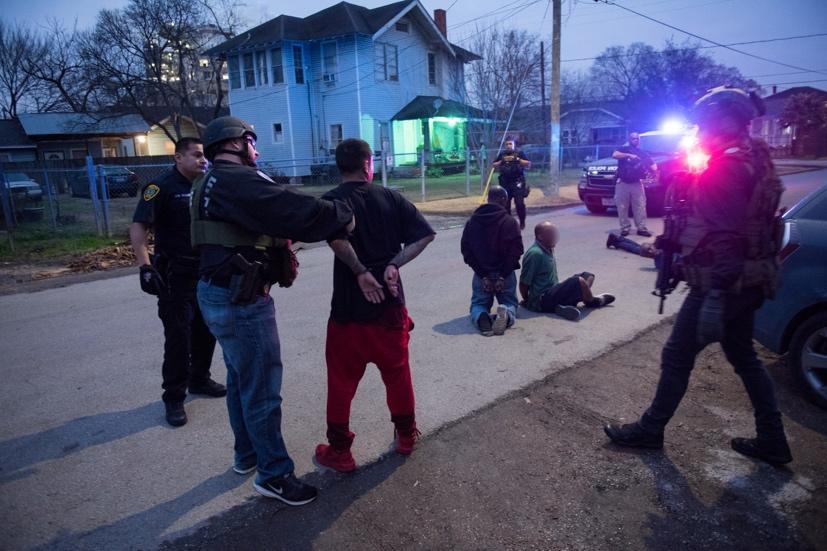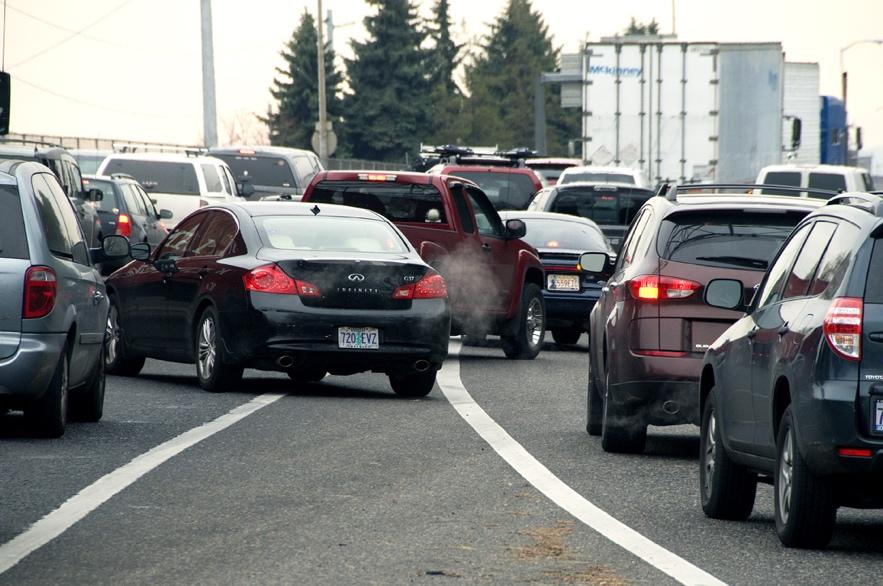1.4 What Makes a Crime Become a Crime?
It is not always so clear what is and what is not criminal. In some instances, it seems obvious and makes the study of such offenses clear. Murder, for example, is a fairly obvious crime, although there are different degrees, as we will discuss later in this book, and what seems clear and obvious sometimes is not actually so. What about crimes that are less obvious? How do we handle those? The varying degrees of crime and all their complexity is another area where criminology often comes in handy.
Figure 1.12 Police Enforcing the Law.
Let’s look at an example of less obvious crimes in history: so-called ugly laws. In many states in the 19th and 20th centuries, it was criminal for anyone to be seen in public who was “diseased, maimed, mutilated, or in any way deformed, so as to be an unsightly or disgusting object” (Chicago City Code, 1881). Beginning in San Francisco in 1867 and spreading across the country in the 1870s and 1880s, some ugly laws remained on the books as late as 1974 in Chicago and Omaha. Women were also targeted with ugly laws in Ohio making it criminal to display “lewd or lascivious behavior” or “improper dress” (Aron, 2017). Criminologists looked at ugly laws, their sources, their intentions, their effects, and provided research on the harmful consequences of such laws, eventually affecting policy.
An example from more recent times is the determination that texting someone to encourage them to commit suicide is criminal. In 2017, Michelle Carter was convicted of manslaughter after texting her boyfriend multiple messages pushing him to follow through with his suicidal ideation. Her text records show she pushed him to carry out his plan, even brainstorming with him what he could do that would be the most effective and least painful, and to do so quickly. The most damning text message in this case was one in which she admitted he got out of the truck where he was poisoning himself with carbon monoxide because he had changed his mind about killing himself and she convinced him to get back in the truck and die (Commonwealth v. Carter, 2019).
Debates between free speech and assisted suicide raged as the courts decided what Michelle did was, in fact, criminal and should be treated as such. Since then, other similar cases have come to light and ended in criminal charges and sentences. As a result of the precedent set by the Michelle Carter case, what may have otherwise been considered simply cruel and deranged is now criminal.
1.4.1 The Creation of Laws
This raises the question, does society guide the laws or do the laws guide society? There is no clear answer to that complicated question. The ugly laws were repealed because of changes in society, whereas changes in society (technology, social media) caused new laws to be created.
When we look across the history of the United States, we can see many examples of laws and society changing one another. Traffic laws were created in response to the invention and proliferation of the automobile and changed the manner in which people moved from location to location in an orderly fashion (figure 1.13). 
Figure 1.13 Traffic Jam.
Prohibition (the banning of alcohol) in the 1920s was in response to an outcry from society about crime, corruption, social ills, and the general degradation of communities. Thirteen years later, prohibition was repealed after realizing it had missed the mark by encouraging the creation of organized crime to source and provide alcohol illegally. Drinking did not decrease, and crime merely shifted. It is unintended consequences of laws like this that criminologists also study and bring to light.
Other examples of society changing laws are the recent legalization of marijuana for recreational use. Federally, the use of marijuana for any purpose is illegal, but many states (and their voters) have removed this law from their books. How might criminologists play a role in these decisions?
1.4.2 Activity: Real and Ridiculous Federal and State Crimes
Read through the “ridiculous” federal and state crimes listed in the table in figure 1.14. Then consider the discussion questions below.
Discussion Questions:
- How would a criminologist look at these laws? How would the criminal justice perspective be different?
- What do you think was going on that led to these things becoming laws? Do you think making these things crimes was the right way to address whatever was going on?
- Would you turn someone in for committing any of these crimes? Which ones? Why or why not?
|
Ridiculous Federal Crimes |
Ridiculous State Crimes |
|---|---|
|
|
Figure 1.14 Real and Ridiculous Federal and State Crimes.
1.4.3 Licenses and Attributions for What Makes a Crime Become a Crime?
“What Makes a Crime Become a Crime?” by Taryn VanderPyl is licensed under CC BY 4.0.
Figure 1.12 Photo of Operation Triple Beam Houston 2018-10 by Office of Public Affairs, CC BY 2.0, via flickr.
Figure 1.13 Photo of Merging traffic by Oregon Department of Transportation, CC BY 2.0, via flickr.
Figure 1.14 Real and Ridiculous Federal and State Crimes by Taryn VanderPyl is licensed under CC BY 4.0.
